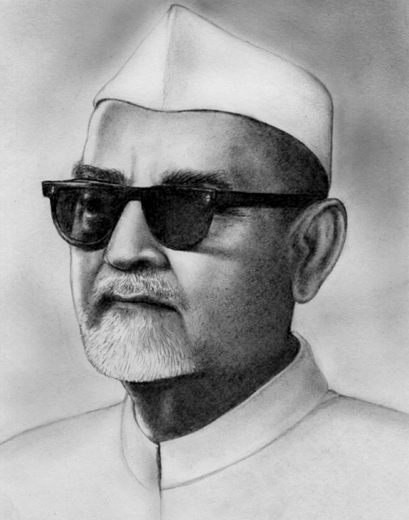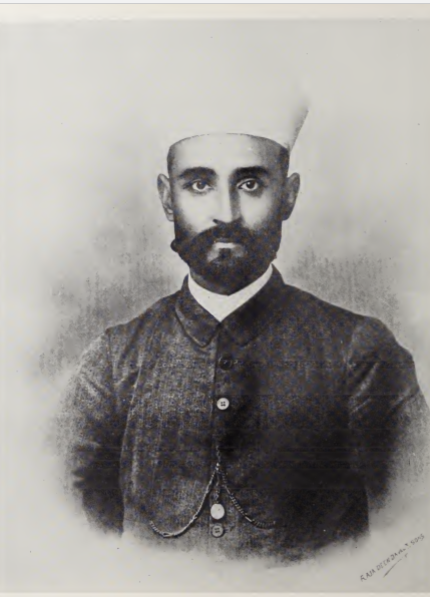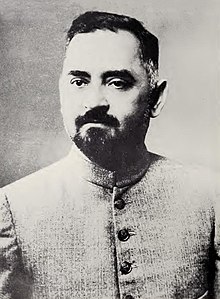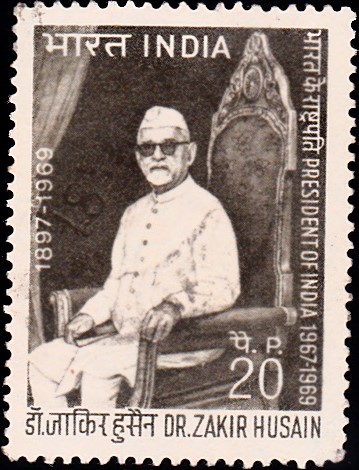
Dr. Zakir Hussain, the third President of Indian republic (1967-1969), was born on 8 February, 1897 in Hyderabad, which is presently the capital of Telangana. His father Fida Hussain Khan and mother Nazneen Begum were originally belonged to the small town of Uttar Pradesh known as Qaimgaj . His patriarch who was popular with title Mad Akhun (the great teacher) was an Afridi Pathan of Kohat settled in Qaimganj (1715). He was revered as a great scholar & mystic among the Bangash settlement of Qaimganj. His grandfather Ghulam Hussain Khan did military services in the court of Nizam where he made a close friendship with Asfarul Mulk ( Dr, Zakir Hussian, Quest for Truth by Ziaul Hasan Faruqi, 1999). After retirement he came back to Qaimganj & sent his Fida Hussain Khan to Hyderabad for the business. Along with business, he completed his degree in law & also started a press in Begum Bazar that publish legal literature. Ain-e-Deccan (Law of the Deccan), a famous legal publication of Hyderabad was launched by him. Unfortunately, Fida Hussain Khan passed away at the early age of thirty nine due to Tuberculosis when Zakir Hussain was ten year old who was third in line among his seven brothers.


He started his schooling at the Government high school, Hyderabad. Till the age of ten Zakir Hussain was taught Arabic, Urdu, Persian & English languages at home also with special tutors. When his father died in 1907, the family migrated to Qaimganj (Farrukhabad) district of UP along with his mother. He joined the Islamia high school at Etawah in 1908 and completed his graduation from the Mohammedan Anglo-Oriental College at Aligarh in 1918. He studied M.A. in Economics and did Law. He became the leader of the Students’ Union while he was in the college. He had an excellent knowledge in National and International affairs and got recognition as a very good orator. Zakir Hussain entered into the National Movement under the influence of Mahatma Gandhi and took part in Khilafat and Non-Cooperation Movements. He was offered Naib Tehsildar post by the British, which was refused by him true to his National ideology. He wanted to train the youth towards the National Movement. Thus, he joined as a Lecturer in the Jamia Milia Islamia College, which was founded during the Khilafat and Non Co-operation Movement. Upon his return from Germany in February, 1926, he totally dedicated himself to the institution. Due to the relentless efforts of Zakir Hussain, the institution has been praised as the ‘Healthy child of the Non Co-operation Movement’. He encouraged the students and the teachers of the Jamia to participate in the Salt Satyagraha in 1930. When Gandhi started collecting ‘Swarajya Fund’, Jamia students, teachers and employees donated for the first time to the fund under his guidance. Dr. Zakir Hussain believed that Hindu-Muslim integrity was essential for the liberation of country from the British. Hence, he conducted several programmes and campaigns in this regard. After Independence, he took the responsibility as the Vice Chancellor of the Aligarh Muslim University on the request of Moulana Abul Kalam Azad and continued in that post till 1956.
He was the member of Rajya Sabha during 1952 and 1956. Dr. Zakir Hussain became the Governor of Bihar in 1957 and the President of India in 1967. He strengthened the Indian National Movement by imparting National Education in the minds of youth of the country. Dr. Zakir Hussain went on a tour to Assam and returned to the Rashtrapati Bhavan on 3 May, 1969. On the same day in the evening he breathed his last. He was buried on the campus of the Jamia Milia Islamia, the institution which he adored very much. On the 40th day of his death (Chehlum) ceremony i.e., 11 July, 1969, a commemorative postal stamp was issued by the Government of India.

Among the galaxy of the luminous star that had shed their radiance on the firmament of our national life, Dr. Zakir Hussain occupies a pride of place. Moulded in the great tradition set before us by the Father of the nation, Mahatma Gandhi Zakir Sahab was the embodiment of all pervading humanism.
V.V.Giri, Rashtra Pati Bhawan, New Delhi, Retrieved from http://www.istampgallery.com/dr-zakir-husain-2/
Syed Naseer Ahamed is a history buff who is documenting the role of Muslims in the struggle for Indian freedom. He is author of sixteen different titles covering the theme of "Muslim participations in Freedom struggle" in Telugu, Urdu, & English. The author can be contacted by 00919440241727
